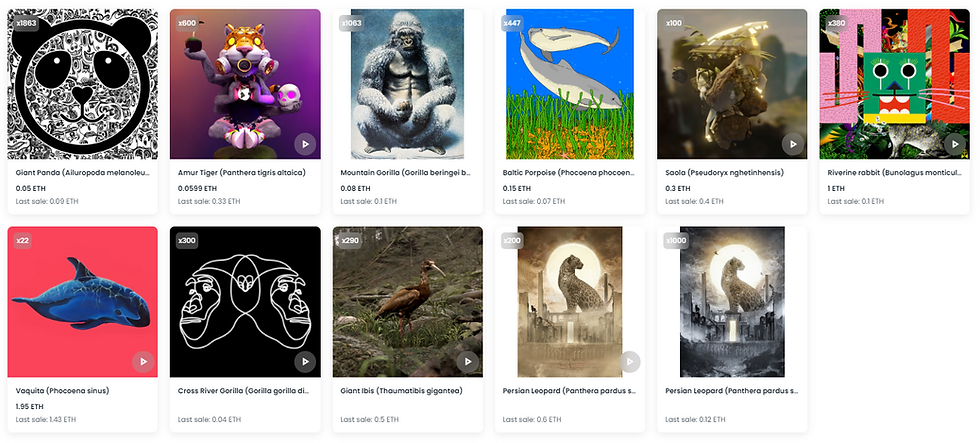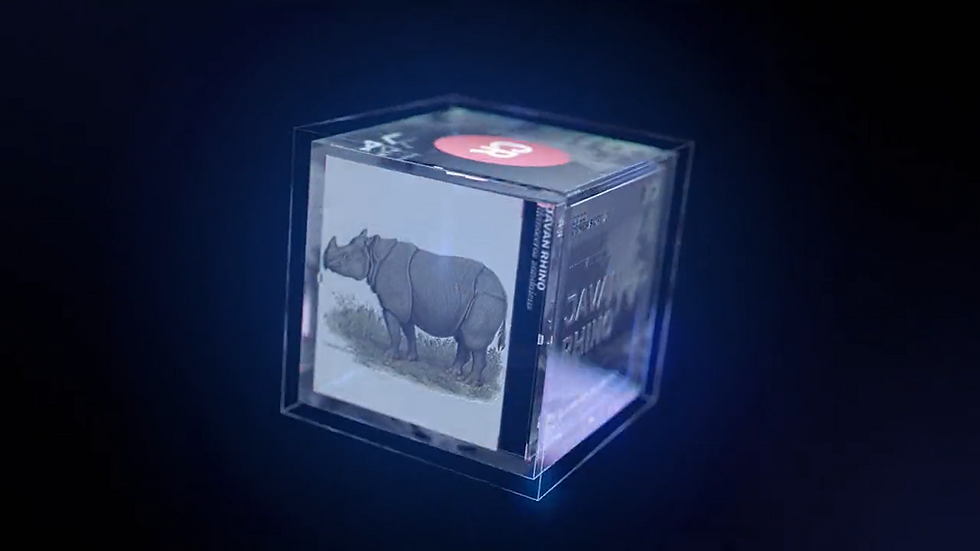WWF Deutschland und seine innovativen Nicht-fungiblen Tiere
- Mufaddal K.
- 17. Feb. 2024
- 4 Min. Lesezeit

The World Wildlife Fund (WWF), founded in 1961, is one of the world's leading conservation organizations. With a presence in nearly 100 countries, WWF's mission is to halt the degradation of the planet's natural environment and build a future where people live in harmony with nature. The organization focuses on critical issues such as climate change, fresh water, forests, oceans, wildlife, food, and sustainable cities.
WWF Germany, a national organization within this global network, is actively involved in numerous conservation projects both locally and internationally. Their endeavors encompass protecting endangered species, promoting the sustainable use of natural resources, and advocating for environmental policy changes. One such endeavor is the groundbreaking Non-Fungible Animals (NFA) campaign, which expands their reach into the digital sphere.
The NFA Campaign
The NFA campaign was launched in November 2021, following six months of preparation that began in April 2021. The campaign drew inspiration from a WWF Japan initiative called “Population by Pixel” launched a decade earlier. The Japanese campaign featured posters of endangered animals with the number of pixels on the poster corresponding to the number of animals remaining in the wild. The message was simple but powerful: for example, the panda poster featured just 1,600 pixels, symbolizing the precarious survival of this species.

Population by Pixel campaign - WWF Japan
WWF Germany adapted this concept for the web3 age by creating Non-Fungible Animals (NFAs). These NFAs, similar to Non-Fungible Tokens (NFTs), are limited because their species only exist in limited numbers. The campaign's dedicated website was developed to sell these NFAs, with proceeds intended to protect endangered species.
The campaign's financial mechanics are set up such that proceeds are allocated to project offices, allowing continued work on the ground to preserve species conservation. Furthermore, WWF receives 10% of the net purchase price from each resale (secondary sale) of the NFA, automatically transferred into their NFA wallet.
The campaign was not only about fundraising; education was another critical objective. The campaign sought to raise awareness about the extinction of animals and the work of WWF. Each animal featured in the campaign had a dedicated page on the website, detailing its story, showcasing pictures, and offering the opportunity to mint the corresponding NFT.
The campaign has raised €273,000 to date, with the potential for more as not all animals are sold out. Saatchi & Saatchi Dusseldorf, one agency helping the campaign, reported a reach of 65 million people, with approximately 800 unique NFT owners.
The NFTs
Each animal's NFT was created by a different artist, often with a connection to that animal. The NFTs, artistic renderings of the animals, are displayed on the campaign's website. The number of NFTs available corresponds to the number of that endangered species left in the wild, usually ranging between 20 to 1,000. For example, there are only 290 NFTs for the Giant Ibis, reflecting the estimated 290 giant ibises left in the world.

The price for each animal NFT varied, ranging from $80 to $400. Purchases required USDC, necessitating a wallet and acquisition of USDC before buying.
Discord and Marketing
WWF Germany created a Discord channel for the campaign, which currently has over 300 members and played a prominent role in the launch.
The marketing strategy involved partnerships with various organizations, both web3-focused and non-web3-focused. Saatchi & Saatchi Dusseldorf, a prominent marketing and communications agency, helped launch the campaign as well.
Despite its national focus, WWF Germany's public relations strategy reached far beyond its borders. The organization approached both mainstream German media and crypto-related news outlets, achieving significant coverage even in spaces usually inaccessible without a budget.
The campaign saw no paid media. Instead, it leveraged a broad mix of non-paid media outlets, ranging from PR to social media to niche channels. Influencers were not directly involved, but collaboration with artists like Bosslogic, a leading Marvel and DC Comics artist and an influencer in his own right, extended the campaign's reach. For instance, his Instagram post related to the campaign reached over two million people.
Reflections from the Campaign Creator
Karl Nowak of WWF Germany, the creator of the NFA campaign, emphasized that WWF is a mass-market organization. From the start, if they were to enter the NFT space, they had to communicate to the general population.
The goal was to bring NFTs to the mass market. Thus, all communications were aimed at a broad audience, with a focus on explaining the concept to newcomers and enabling easy entry into the world of crypto. This aim influenced their choice of a wallet that allowed easy account creation through Facebook login or Google account. While it may not have been the best wallet, it was the most user-friendly.
Nowak acknowledged that many people would encounter NFTs for the first time through this campaign, and many would not buy one. However, that was not the main objective of the campaign. The campaign received positive feedback from people who appreciated its innovative approach. Many supporters were buying their first NFT through the campaign, showing their support for WWF's mission in a novel way.
The NFA campaign by WWF Germany offers an inspiring example of how traditional non-profit organizations can leverage NFTs to further their cause. The campaign successfully raised significant funds for conservation, educated the public about endangered species, and introduced many people to the world of NFTs.



